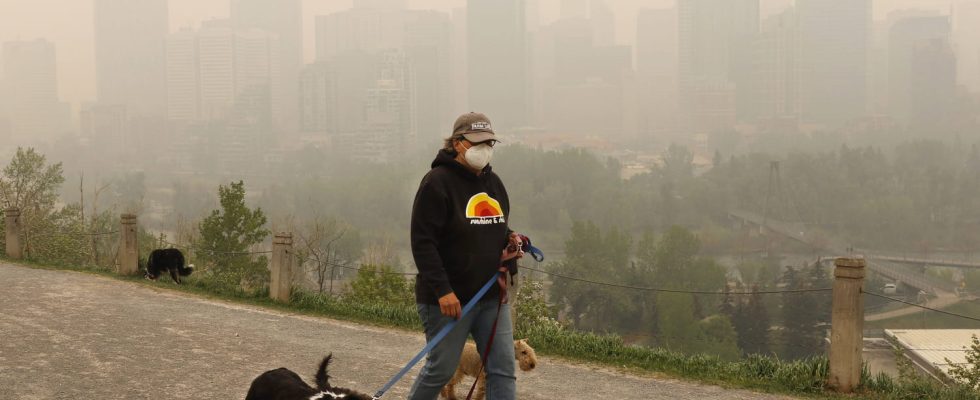Another week in smoke for much of Canada. Eight of the country’s 13 provinces are affected by major forest fires. A state of emergency has just been declared in Halifax.
In order to release emergency funds, a state of emergency has been declared in Halifax for a period of 7 days. More than 18,000 people residing around this important Canadian city have had to flee their homes. The fire is spreading rapidly around Nova Scotia’s capital as the weather forecast does not call for rain until this weekend.
“It is a very serious fire that is progressing with the winds which are constantly changing”, detailed Mike Savage, mayor of Halifax, at the microphone of the CBC. Local town halls have opened reception centers for these thousands of displaced people.
Authorities are still struggling to estimate the extent of the wildfires due to vagaries of the wind. But, Dave Meldrum, deputy chief of the Regional Municipality’s fire and emergency services, expects a long fight during the news of TF1 “Our firefighters will be here for days. Even when the fire is put out, there will be a lot of work to do to flush out and fight the underground fires.”
Areas burned break records every year
Canada was hit early by the fires this year: the number of hectares that had gone up in smoke was already approaching one million even before the start of summer. The province of Alberta thus experienced the worst fire in its history at the beginning of May with the disappearance of 12 times the area of its capital. Forest fires are increasing, but according to the Canadian journalist Etienne Leblanc : “Experts also find that fire seasons start earlier and end later.”
Fire in Nova Scotia (Canada): 16,000 people evacuated, several houses devastated The state of emergency declared by the authorities. pic.twitter.com/lrabvcV3sn
— Forest Fires (@FeuxdeForet_FR) May 30, 2023
The gcanadian government even estimates that “the area devastated by forest fires is expected to double by 2050 due to climate change.” In response, the country launched the “GardeFeu” mission: a satellite system to monitor its forests. But the Canadian Space Agency does not plan to put it into service until 2029. A significant period of time at a time when fires are threatening more and more.
Climate change is thus very vicious: the Canadian boreal forest has historically captured large quantities of carbon. The devastating fires of recent months therefore release a lot of CO₂ into the atmosphere. This aggravates climate change which increases the likelihood of fires. Without real global upheaval, Canada must therefore expect to live in a cycle of ever larger forest fires.
What are the solutions for Canada?
Solutions exist to adapt, but this requires having the support of the population for policies, deepening scientific expertise in order to better control and prevent fires and having financial funds to match the challenges. These prevention policies are rarely popular before the problem arrives. If no houses are burnt down or no one dies, the quality of the development will be less relayed than when thousands of people are forced to abandon their homes as at present in Halifax.
Canada has thus allocated 346.1 million dollars to the fight against forest fires while the fossil fuel sector has benefited from approximately 10.7 billion dollars per year between 2015 and 2021 according to The duty. Ironically, this type of investment contributes enormously to climate change and therefore to the multiplication of forest fires in the North American country.
Among the possible solutions, a debate exists in Canada on the possibility of betting on less flammable trees. Some provinces are also open to the return of an Aboriginal technique that has been practiced for millennia: prescribed burning. It is a question of: “avoiding the formation of a bed of plants which could serve as fuel for a possible fire” by burning the most combustible vegetation and dead wood before the summer season according to the Var Departmental Fire and Rescue Service.
